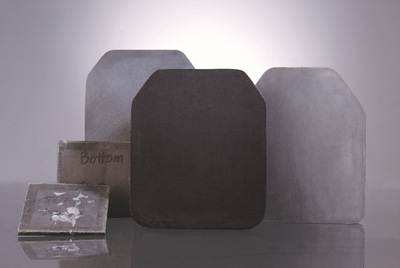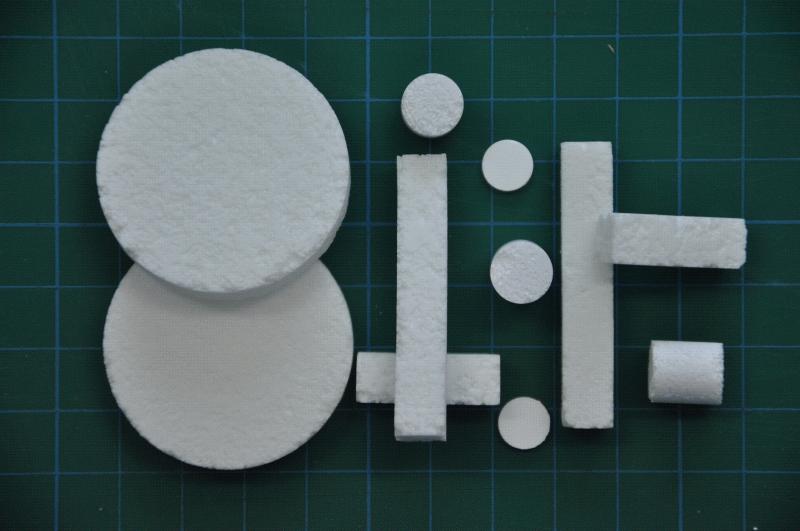For superconducting materials, the manufacturing process is different. The process method is different, and the obtained Tc is also different. because this chapter can only be part of the introduction for reference.
The preparation of superconducting ceramics is similar to the general ceramic manufacturing process. Such as the preparation and processing of raw materials, molding and firing, etc. It is necessary to continuously explore through practice. Sometimes it is necessary to take some special technological measures.
For the selection of raw materials, some use high-purity raw materials, such as analytical purity and spectral purity. Some are like general electronic ceramics.Chemical purity, etc., depends on its specific circumstances.
In terms of technology, pre-sintering treatment, molding method and sintering degree have a great influence on superconducting ceramics.

The preparation method of oxide superconducting ceramics generally adopts the solid-state reaction method. That is to say, the constituent powders are mixed according to the ratio, placed in a platinum or alumina crucible, and placed in an electric furnace (under atmospheric atmosphere) for sintering. The sintering temperature is 900~960℃, and the time is at least 4h. Generally, it is natural cooling. In order to make the material uniform, it can be crushed, re-compacted, and sintered for the second or third time.
Some are synthesized in two steps. For example, in the Y2O3-BaO-CuO ternary system, BaCO3 and Y2O3 are synthesized at a ratio of 4:1 (mol). Then Ba4Y2O7 and CuO were synthesized at a ratio of 1:5 (mol) to Ba2YCu3O7-x. Experiments show that this is conducive to reaction and control, and has good repeatability, and has the technological possibility of obtaining high-purity single-phase superconducting materials.
The molding can be carried out on a general press or isostatic pressing. Of course, the different molding methods will affect the compactness.
Sintering has a great influence on the performance of superconducting ceramics. If the sintering temperature is too low, the reaction will be incomplete; if the sintering temperature is too high, phase decomposition will occur.
The sintering time is not as long as possible. If it is too long (such as more than 30h), macroscopic phase segregation will occur, and different parts will show different beard colors. For example, the black area is BaCuO2, the gray-black area is Ba2YCu3O7-x, and the green area is BaY2CuO5, only Ba2YCu3O7-x has high temperature superconductivity.
The oxygen partial pressure during sintering is a very important control parameter. Too low or too high oxygen partial pressure is unfavorable and will cause the appearance of tetragonal phase. Therefore, whether to pass oxygen during sintering depends on actual conditions. If the air circulation in the furnace is good, it is not necessary to pass oxygen; on the contrary, it should be sintered with oxygen.
The cooling rate is also an important control parameter. Generally, both low temperature quenching and high temperature quenching will destroy the superconductivity. For slow down temperature, the transformation from tetragonal to orthogonal can be fully completed, and a superconductor with a high zero resistance temperature can be obtained.
The manufacturing process of Bi-Sr-Ca-Cu-O system high-temperature superconducting ceramics will be introduced below.
The system uses Bi2O3, SrCO3, CaCO3 and CuO above chemical purity as raw materials. Bi:Sr:Ca:Cu= 1:1:1:2 is used for ingredients. Add absolute ethanol in the ball mill barrel for wet grinding and mixing, and after drying, it is pressed into large pieces for pretreatment synthesis. The pre-synthesis was carried out in two times: the first time was carried out at 800°C/12h; the second time was carried out at 820°C/12h. After being crushed and ground, the synthetic block material is granulated with PVD binder and pressed into a Φ28 disc, placed in an Al2O3 crucible, and sintered at a temperature of 860℃/12h. The sintering temperature range of general materials is relatively narrow, so care should be taken when firing. The sintering temperature of the material is different, and its performance is also different.
Not only that, the different cooling conditions have a great influence on the superconducting performance.
The Bi-Sr-Ca-Cu-O system has two commercial-temperature superconducting phases coexisting. Relatively speaking, the higher-temperature superconducting phase is a metastable phase. It needs a more suitable heat treatment process to stabilize it, while inhibiting the growth and existence of the lower temperature superconducting phase.
Declaration: This article is provided by CERADIR™ users or obtained from Internet, the content does not represent the position of CERADIR™. We are not responsible for the authenticity/accuracy of the article, especially the effects of the products concerned. This article is for study only, it does not constitute any investment or application advice. For reprinting, please contact the original author. If it involves the copyright and/or other issues, please contact us and we will deal with it asap! CERADIR™ has the interpretation of this declaration.







